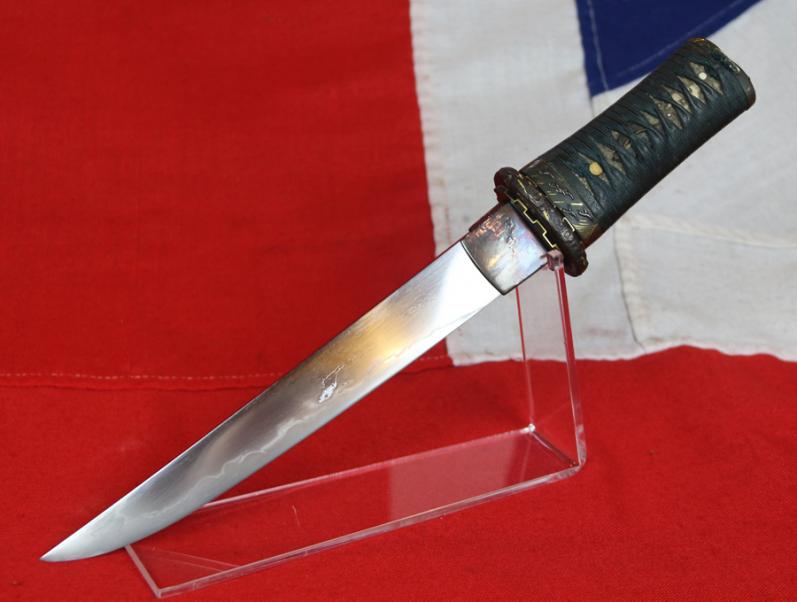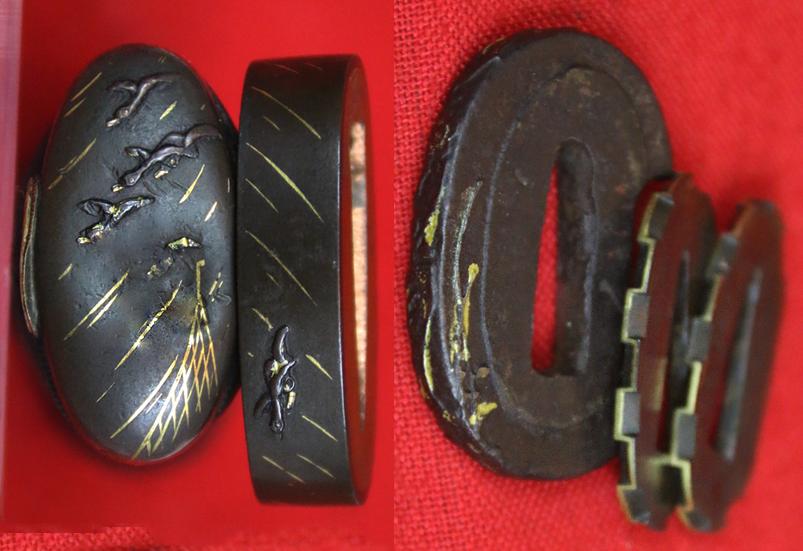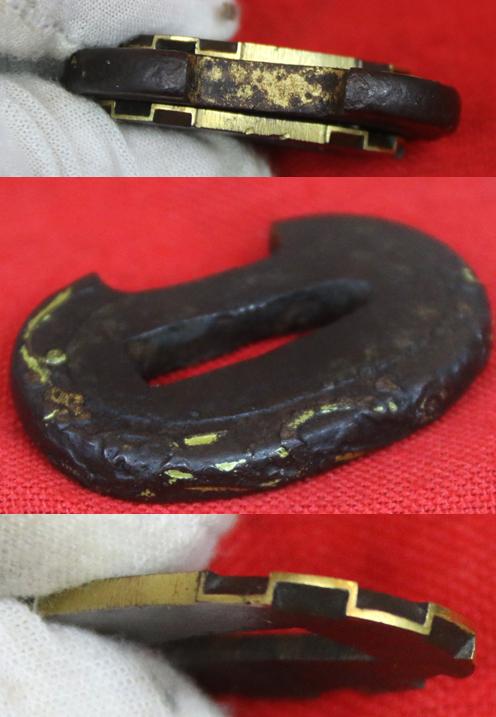A Delightful Armour Piercing Sengoku Period Samurai’s Dagger. A Period That Commenced in 1468. A Samurai Tanto From The Koto Era, Made Around 500 Years Old. Fully Mounted And Fitted With Original Edo Period Mountings {Koshirae}
The era is beautifully depicted in Akira Kurowsawa’s films called Jidaigeki. The Sengoku Period (1467-1568 CE) was a lawless century-long era characterized by rising political instability, turmoil, and warlordism in Japan. During this period, field armies and soldiers rapidly rose in number, reaching tens of thousands of warriors. Many castles in Japan were built during the Sengoku Period as regional leaders and aristocrats alike competed for power and strong regional influence to win the favours of the higher-class Japanese at the time. Kurosawa’s film depiction of Macbeth, Throne of Blood, is set in this era of Japan’s feudal period. Original title 蜘蛛巣城, Kumonosu-jō, lit. 'The Castle of Spider's Web'
With a most powerful armour piercing blade showing a very fine and most elaborate hamon in nice polish. The all Edo period mounts are decorated with a flock of geese flying in formation over high mounted fishing nets in a shower of rain of pure gold in shakudo and gold. The seppa are beautifully carved with deep crenellated edging in pure gold and shakudo. The tsuba is an oval plate in iron with a full relief edge decoration of prunus. Superb lobster scale pattern ribbed lacquer saya shown with a small kozuka pocket containing its sinchu kodzuka knife decorated with a takebori dragon on both sides. The Sengoku period was initiated by the Ōnin War in 1467 which collapsed the feudal system of Japan under the Ashikaga Shogunate. Various samurai warlords and clans fought for control over Japan in the power vacuum, while the Ikkō-ikki emerged to fight against samurai rule. The arrival of Europeans in 1543 introduced the arquebus into Japanese warfare, and Japan ended its status as a tributary state of China in 1549. Oda Nobunaga dissolved the Ashikaga Shogunate in 1573 and launched a war of political unification by force, including the Ishiyama Hongan-ji War, until his death in the Honnō-ji Incident in 1582. Nobunaga's successor Toyotomi Hideyoshi completed his campaign to unify Japan and consolidated his rule with numerous influential reforms. Hideyoshi launched the Japanese invasions of Korea in 1592, but their eventual failure damaged his prestige before his death in 1598. Tokugawa Ieyasu displaced Hideyoshi's young son and successor Toyotomi Hideyori at the Battle of Sekigahara in 1600 and re-established the feudal system under the Tokugawa Shogunate. The Sengoku period ended when Toyotomi loyalists were defeated at the siege of Osaka in 1615.
The Sengoku period was named by Japanese historians after the similar but otherwise unrelated Warring States period of China.The tanto was designed primarily as a stabbing weapon, but the edge can be used for slashing as well. Tanto are generally forged in hira-zukuri style (without ridgeline), meaning that their sides have no ridge line and are nearly flat, unlike the shinogi-zukuri structure of a katana. Some tanto have particularly thick cross-sections for armour-piercing duty, and are called yoroi toshi. The tantos primary use was a type of stabbing weapon, however, the blade could also be used for slashing as well. Some tanto were forged with a particularly thick cross section which was thought to aid in piercing the armour of enemies, this type of dagger would be called a yoroi toshi.
A tanto would most often be worn by Samurai, and it was very uncommon to come across a non samurai with a tanto. It was not only men who carried these daggers, women would on occasions carry a small tanto called a kaiken in their obi which would be used for self-defence. In feudal Japan a tanto would occasionally be worn by Samurai in place of the wakizashi in a combination called the daisho, which roughly translates as big-little, in reference to the big Samurai Sword (Katana) and the small dagger (tanto). Before the rise of the katana it was more common for a Samurai to carry a tachi and tanto combination as opposed to a katana and wakizashi. The blade is in super condition for it's age, with a small rice grain sized blemish to one side of the blade, the kashira has a small impact dent. Overall 14.25 inches long in saya
Code: 23961
3495.00 GBP










